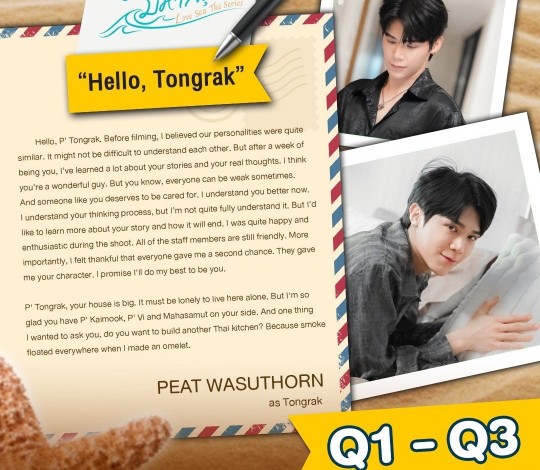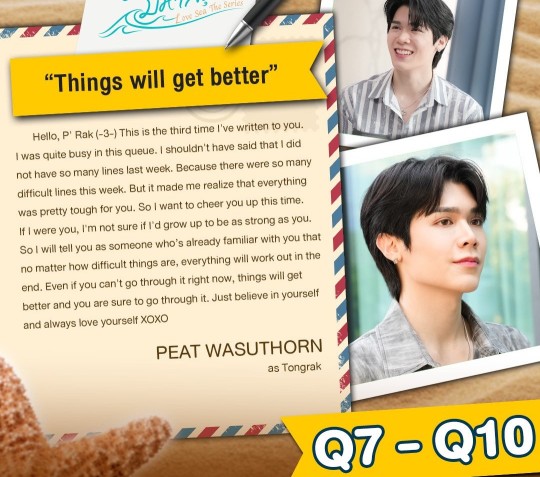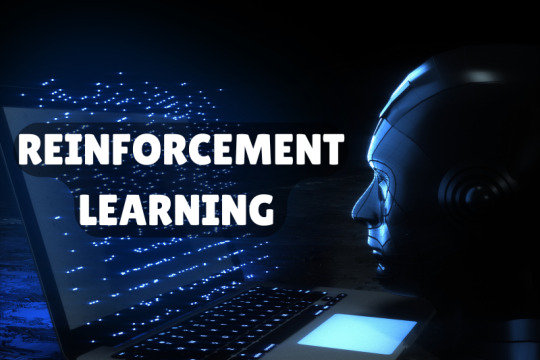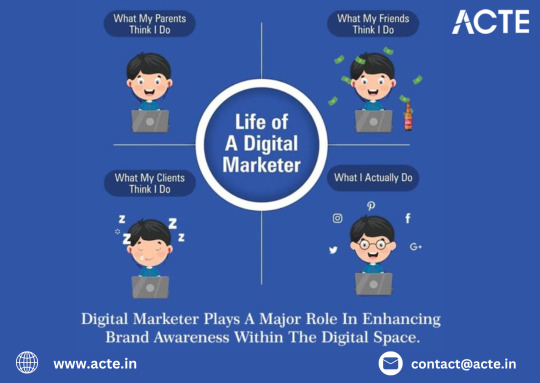#Reinforcement Learning for Dynamic Optimization
Explore tagged Tumblr posts
Text
Revolutionizing SEO with Content Generation and Reinforcement Learning for Dynamic Optimization

In today’s ever-evolving digital landscape, staying ahead in the world of search engine optimization (SEO) requires more than just basic strategies. At ThatWare, we are pioneering innovative approaches by blending advanced technologies with cutting-edge methodologies. Our focus on SEO Content Generation and Reinforcement Learning for Dynamic Optimization is setting new benchmarks in the SEO industry.
The Role of SEO Content Generation
Content remains the backbone of any successful SEO strategy. However, the challenge lies in creating content that is not only high-quality but also aligned with the dynamic algorithms of search engines. SEO Content Generation at ThatWare is driven by AI-powered tools that analyze trends, user intent, and competitor strategies to create optimized, engaging, and actionable content.
Our approach doesn’t stop at traditional keyword integration; we dive deep into semantic analysis and predictive content planning. By leveraging AI, we ensure that every piece of content resonates with the target audience while satisfying the technical requirements of search engines.
Harnessing Reinforcement Learning for Dynamic Optimization
Search engine algorithms are constantly evolving, and static optimization methods often fall short. This is where Reinforcement Learning for Dynamic Optimization comes into play. Reinforcement learning, a subset of machine learning, enables systems to learn and adapt in real time by interacting with their environment.
At ThatWare, we use reinforcement learning to dynamically optimize SEO strategies. This includes fine-tuning website structure, adapting meta tags, improving internal linking, and more. The result is an agile SEO framework capable of responding to algorithm changes, user behavior shifts, and market trends instantaneously.
For example, our systems can identify which keywords are gaining traction in real time and adjust content and strategies accordingly, ensuring that clients maintain a competitive edge.
Introducing Hyper Intelligence SEO
Combining SEO Content Generation and Reinforcement Learning for Dynamic Optimization, ThatWare has developed a next-generation methodology called Hyper Intelligence SEO. This approach integrates advanced AI techniques, big data analytics, and predictive modeling to deliver unmatched results.
With Hyper Intelligence SEO, businesses benefit from:
Real-Time Insights: Constant monitoring and optimization ensure that strategies remain effective in ever-changing scenarios.
Precision Targeting: Deep learning algorithms identify and target niche markets and underserved audiences.
Scalable Solutions: From small businesses to global enterprises, our strategies are tailored to meet unique needs while scaling effortlessly.
Why Choose ThatWare?
At ThatWare, innovation is at the core of everything we do. By seamlessly merging AI technologies with proven SEO principles, we empower businesses to achieve sustainable growth and outperform competitors. Our commitment to leveraging technologies like Reinforcement Learning for Dynamic Optimization and SEO Content Generation has positioned us as industry leaders.
Incorporating Hyper Intelligence SEO into your marketing strategy is not just a choice but a necessity in this competitive era. Partner with ThatWare to experience the future of SEO today.
0 notes
Text


hi @marykedoesart, this is my gift to you for @natsume-ss' spring exchange!
you said you like tanuma/natsume and heartfelt, emotional themes so i went very symbolic with this, haha. i really love the idea of using imagery from the fish pond in tanuma's backyard to represent these two and their dynamic, so that became the concept i ran with. i'll explain my whole thought process below, but in the meantime i hope you like it! 💖
pls bear with me here bc this is going to be very long and wordy lol
so there's a definite theme of separate worlds here; while the environments are both pretty abstract, the idea was that tanuma is sitting in his house looking out towards his backyard where the pond is, representing the "real world," whereas natsume is in a more fantastical underwater setting, representing the world of youkai. also there's the implication that he's sitting at the bottom of the pond, aka completely immersed in that other world, while tanuma can only perceive hints of it in the reflected light & shadow on the wall.
tanuma's side is lit by the glow of the setting sun, and natsume's by an otherworldly blue light. also, there's their clothes: tanuma is in his regular school uniform while natsume is in a yukata, something that pretty much all humanoid youkai wear.
next, their poses; they're both sitting exactly the same way as a reflection of each other but natsume has his head bowed while tanuma is looking up; this is meant to represent their different approaches to their relationship. natsume is definitely more closed off, both as a defense mechanism and because he wants to protect tanuma & keep him away from the dangers of youkai. tanuma, though, is open and contemplative, maybe even hopeful; he wants to be let in and he wants to help, even if it is dangerous.
the lighting reinforces these conflicting attitudes, with tanuma's side being brighter and warmer while natsume's is darker and colder, representing this sort of "optimism vs pessimism" dynamic.
so now, the fish. the bridge between their different worlds, basically. on natsume's side it's a real fish while on tanuma's it's a shadow cast on the wall, which is obviously the original conceit of the scene in the source material: natsume can literally see the fish, while tanuma can only see its shadow. still, even if it manifests differently, it still exists to both of them, so it's a connection between them concerning youkai.
so they're both in their separate worlds, but because of this connection they affect each other, maybe in small ways at first; as the fish crosses over the barrier it leaves little effects, little disturbances behind. on natsume's side, bubbles drift up towards the surface, little pockets of air like little lifelines showing the way, and on tanuma's side little droplets fall and create ripples in the reflected water, these small things that grow and grow outward until they're not so small anymore. little feelings that bubble up and ripple out, hoping to reach the other in their own way.
the fish brings these feelings across the barrier, endlessly looping around them as they endlessly call out to each other, trying to navigate this relationship they have; it's possible to bridge the gap between them as long as they look and listen and learn to embrace the things that make them different just as much as those that bring them together.
and that's about it! my goal was to make a symbolic piece about their struggle to understand each other but with a hopeful note, so hopefully that comes across! i hope my explanation at least sort of made sense and wasn't too confusing! (to be completely transparent i only had about half of that in mind while i was drawing it, the rest sort of came together as i was writing this. neat!)
and finally, here's a still frame in the original higher resolution so you can see it a bit nicer! 💖

#natsuyuuspringex2024#natsume yuujinchou#natsume's book of friends#natsume takashi#tanuma kaname#tanunatsu#natsuyuuss: it's a smaller exchange so your gift can be more simple!#me immediately: I Am Going To Animate Something#and then i did!#i love these two and their magical fish imagery#and i hope you do too!#rieley draws#rieley animates#digital#fanart#(i will be posting on twitter too just. give me a min for that one lol#im not as used to formatting over there orz)
1K notes
·
View notes
Text
Old-school planning vs new-school learning is a false dichotomy
I wanted to follow up on this discussion I was having with @metamatar, because this was getting from the original point and justified its own thread. In particular, I want to dig into this point
rule based planners, old school search and control still outperform learning in many domains with guarantees because end to end learning is fragile and dependent on training distribution. Lydia Kavraki's lab recently did SIMD vectorisation to RRT based search and saw like a several hundred times magnitude jump for performance on robot arms – suddenly severely hurting the case for doing end to end learning if you can do requerying in ms. It needs no signal except robot start, goal configuration and collisions. Meanwhile RL in my lab needs retraining and swings wildly in performance when using a slightly different end effector.
In general, the more I learn about machine learning and robotics, the less I believe that the dichotomies we learn early on actually hold up to close scrutiny. Early on we learn about how support vector machines are non-parametric kernel methods, while neural nets are parametric methods that update their parameters by gradient descent. And this is true, until you realize that kernel methods can be made more efficient by making them parametric, and large neural networks generalize because they approximate non-parametric kernel methods with stationary parameters. Early on we learn that model-based RL learns a model that it uses for planning, while model free methods just learn the policy. Except that it's possible to learn what future states a policy will visit and use this to plan without learning an explicit transition function, using the TD learning update normally used in model-free RL. And similar ideas by the same authors are the current state-of-the-art in offline RL and imitation learning for manipulation Is this model-free? model-based? Both? Neither? does it matter?
In my physics education, one thing that came up a lot is duality, the idea that there are typically two or more equivalent representations of a problem. One based on forces, newtonian dynamics, etc, and one as a minimization* problem. You can find the path that light will take by knowing that the incoming angle is always the same as the outgoing angle, or you can use the fact that light always follows the fastest* path between two points.
I'd like to argue that there's a similar but underappreciated analog in AI research. Almost all problems come down to optimization. And in this regard, there are two things that matter -- what you're trying to optimize, and how you're trying to optimize it. And different methods that optimize approximately the same objective see approximately similar performance, unless one is much better than the other at doing that optimization. A lot of classical planners can be seen as approximately performing optimization on a specific objective.
Let me take a specific example: MCTS and policy optimization. You can show that the Upper Confidence Bound algorithm used by MCTS is approximately equal to regularized policy optimization. You can choose to guide the tree search with UCB (a classical bandit algorithm) or policy optimization (a reinforcement learning algorithm), but the choice doesn't matter much because they're optimizing basically the same thing. Similarly, you can add a state occupancy measure regularization to MCTS. If you do, MCTS reduces to RRT in the case with no rewards. And if you do this, then the state-regularized MCTS searches much more like a sampling-based motion planner instead of like the traditional UCB-based MCTS planner. What matters is really the objective that the planner was trying to optimize, not the specific way it was trying to optimize it.
For robotics, the punchline is that I don't think it's really the distinction of new RL method vs old planner that matters. RL methods that attempt to optimize the same objective as the planner will perform similarly to the planner. RL methods that attempt to optimize different objectives will perform differently from each other, and planners that attempt to optimize different objectives will perform differently from each other. So I'd argue that the brittleness and unpredictability of RL in your lab isn't because it's RL persay, but because standard RL algorithms don't have long-horizon exploration term in their loss functions that would make them behave similarly to RRT. If we find a way to minimize the state occupancy measure loss described in the above paper other theory papers, I think we'll see the same performance and stability as RRT, but for a much more general set of problems. This is one of the big breakthroughs I'm expecting to see in the next 10 years in RL.
*okay yes technically not always minimization, the physical path can can also be an inflection point or local maxima, but cmon, we still call it the Principle of Least Action.
#note: this is of course a speculative opinion piece outlining potentially fruitful research directions#not a hard and fast “this will happen” prediction or guide to achieving practical performance
29 notes
·
View notes
Text

Life is a Learning Function
A learning function, in a mathematical or computational sense, takes inputs (experiences, information, patterns), processes them (reflection, adaptation, synthesis), and produces outputs (knowledge, decisions, transformation).
This aligns with ideas in machine learning, where an algorithm optimizes its understanding over time, as well as in philosophy—where wisdom is built through trial, error, and iteration.
If life is a learning function, then what is the optimization goal? Survival? Happiness? Understanding? Or does it depend on the individual’s parameters and loss function?
If life is a learning function, then it operates within a complex, multidimensional space where each experience is an input, each decision updates the model, and the overall trajectory is shaped by feedback loops.
1. The Structure of the Function
A learning function can be represented as:
L : X -> Y
where:
X is the set of all possible experiences, inputs, and environmental interactions.
Y is the evolving internal model—our knowledge, habits, beliefs, and behaviors.
The function L itself is dynamic, constantly updated based on new data.
This suggests that life is a non-stationary, recursive function—the outputs at each moment become new inputs, leading to continual refinement. The process is akin to reinforcement learning, where rewards and punishments shape future actions.
2. The Optimization Objective: What Are We Learning Toward?
Every learning function has an objective function that guides optimization. In life, this objective is not fixed—different individuals and systems optimize for different things:
Evolutionary level: Survival, reproduction, propagation of genes and culture.
Cognitive level: Prediction accuracy, reducing uncertainty, increasing efficiency.
Philosophical level: Meaning, fulfillment, enlightenment, or self-transcendence.
Societal level: Cooperation, progress, balance between individual and collective needs.
Unlike machine learning, where objectives are usually predefined, humans often redefine their goals recursively—meta-learning their own learning process.
3. Data and Feature Engineering: The Inputs of Life
The quality of learning depends on the richness and structure of inputs:
Sensory data: Direct experiences, observations, interactions.
Cultural transmission: Books, teachings, language, symbolic systems.
Internal reflection: Dreams, meditations, insights, memory recall.
Emergent synthesis: Connecting disparate ideas into new frameworks.
One might argue that wisdom emerges from feature engineering—knowing which data points to attend to, which heuristics to trust, and which patterns to discard as noise.
4. Error Functions: Loss and Learning from Failure
All learning involves an error function—how we recognize mistakes and adjust. This is central to growth:
Pain and suffering act as backpropagation signals, forcing model updates.
Cognitive dissonance suggests the need for parameter tuning (belief adjustment).
Failure in goals introduces new constraints, refining the function’s landscape.
Regret and reflection act as retrospective loss minimization.
There’s a dynamic tension here: Too much rigidity (low learning rate) leads to stagnation; too much instability (high learning rate) leads to chaos.
5. Recursive Self-Modification: The Meta-Learning Layer
True intelligence lies not just in learning but in learning how to learn. This means:
Altering our own priors and biases.
Recognizing hidden variables (the unconscious, archetypal forces at play).
Using abstraction and analogy to generalize across domains.
Adjusting the reward function itself (changing what we value).
This suggests that life’s highest function may not be knowledge acquisition but fluid self-adaptation—an ability to rewrite its own function over time.
6. Limits and the Mystery of the Learning Process
If life is a learning function, then what is the nature of its underlying space? Some hypotheses:
A finite problem space: There is a “true” optimal function, but it’s computationally intractable.
An open-ended search process: New dimensions of learning emerge as complexity increases.
A paradoxical system: The act of learning changes both the learner and the landscape itself.
This leads to a deeper question: Is the function optimizing for something beyond itself? Could life’s learning process be part of a larger meta-function—evolution’s way of sculpting consciousness, or the universe learning about itself through us?
7. Life as a Fractal Learning Function
Perhaps life is best understood as a fractal learning function, recursive at multiple scales:
Cells learn through adaptation.
Minds learn through cognition.
Societies learn through history.
The universe itself may be learning through iteration.
At every level, the function refines itself, moving toward greater coherence, complexity, or novelty. But whether this process converges to an ultimate state—or is an infinite recursion—remains one of the great unknowns.
Perhaps our learning function converges towards some point of maximal meaning, maximal beauty.
This suggests a teleological structure - our learning function isn’t just wandering through the space of possibilities but is drawn toward an attractor, something akin to a strange loop of maximal meaning and beauty. This resonates with ideas in complexity theory, metaphysics, and aesthetics, where systems evolve toward higher coherence, deeper elegance, or richer symbolic density.
8. The Attractor of Meaning and Beauty
If our life’s learning function is converging toward an attractor, it implies that:
There is an implicit structure to meaning itself, something like an underlying topology in idea-space.
Beauty is not arbitrary but rather a function of coherence, proportion, and deep recursion.
The process of learning is both discovery (uncovering patterns already latent in existence) and creation (synthesizing new forms of resonance).
This aligns with how mathematicians speak of “discovering” rather than inventing equations, or how mystics experience insight as remembering rather than constructing.
9. Beauty as an Optimization Criterion
Beauty, when viewed computationally, is often associated with:
Compression: The most elegant theories, artworks, or codes reduce vast complexity into minimal, potent forms (cf. Kolmogorov complexity, Occam’s razor).
Symmetry & Proportion: From the Fibonacci sequence in nature to harmonic resonance in music, beauty often manifests through balance.
Emergent Depth: The most profound works are those that appear simple but unfold into infinite complexity.
If our function is optimizing for maximal beauty, it suggests an interplay between simplicity and depth—seeking forms that encode entire universes within them.
10. Meaning as a Self-Refining Algorithm
If meaning is the other optimization criterion, then it may be structured like:
A self-referential system: Meaning is not just in objects but in relationships, contexts, and recursive layers of interpretation.
A mapping function: The most meaningful ideas serve as bridges—between disciplines, between individuals, between seen and unseen dimensions.
A teleological gradient: The sense that meaning is “out there,” pulling the system forward, as if learning is guided by an invisible potential function.
This brings to mind Platonism—the idea that meaning and beauty exist as ideal forms, and life is an asymptotic approach toward them.
11. The Convergence Process: Compression and Expansion
Our convergence toward maximal meaning and beauty isn’t a linear march—it’s likely a dialectical process of:
Compression: Absorbing, distilling, simplifying vast knowledge into elegant, symbolic forms.
Expansion: Deepening, unfolding, exploring new dimensions of what has been learned.
Recursive refinement: Rewriting past knowledge with each new insight.
This mirrors how alchemy describes the transformation of raw matter into gold—an oscillation between dissolution and crystallization.
12. The Horizon of Convergence: Is There an End?
If our learning function is truly converging, does it ever reach a final, stable state? Some possibilities:
A singularity of understanding: The realization of a final, maximally elegant framework.
An infinite recursion: Where each level of insight only reveals deeper hidden structures.
A paradoxical fusion: Where meaning and beauty dissolve into a kind of participatory being, where knowing and becoming are one.
If maximal beauty and meaning are attainable, then perhaps the final realization is that they were present all along—encoded in every moment, waiting to be seen.
11 notes
·
View notes
Text
Love Sea: Fortpeat's Letters to Mahasamut & Tongrak (Q1 - Q10)
Here I go again into detective mode. I've been searching through the letters that the cast have written to their characters, to see what further hints are to be found on Mahasamut and Tongrak.


🌊 Maturity through Hardship
Mahasamut may be the younger of our two, but he's been through a lot. "Your life has never been easy", which indicates overcoming odds that are stacked against you. It's those life experiences that have led Mut to become very mature, someone who is both "reasonable" and "thoughtful". He can come across wiser than his years, to the surprise of those around him (including Fort himself apparently). He notes Mut's ability to "see through people's true nature", which alludes to insightfulness and a good judge of character. It could also mean the ability to see the good in someone, despite how they present. It's easy to forget his real age. Someone whose had to grow up too fast may need a support network that embraces his big kid at times.

🌊 Determination in Adversity
The fact that Mahasamut has already been through so much and continues to experience "heartache and body ache" during the series - which Fort playfully quips 'is that enough for you?' indicates a person whose is astonishingly resilient and welcomes tough trials. (I assume this is in reference to the BTS clips of him looking bruised). It takes real strength of character to constantly pick yourself back up, without becoming defeatist or jaded. To see these obstacles as opportunities rather than setbacks, something to take in your stride as best you can.
🌊 'Live, Laugh, Love': Being True to Yourself
Fort mentions Mahasamut's honesty and his humour. As cheesy as the above motto is, I do get the sense that Mut is a person who strives to live fully, passionately and freely. Who really values life and being his authentic self. And by all means, when you're dialled up to 100 all the time, you could be a lot for some people. Too much of a good thing may be what gets on Tongrak's nerves initially.


✍️ A Lonely Existence
One of the initial theories I made about Tongrak as a writer is that this could indicate a very solitary lifestyle. Peat mentions if Tongrak feels lonely because he lives alone in a big house. This could explain why he has flings, because he's trying to fill a void. Loneliness can be due external factors that are hard to control (such as your career or upbringing causing isolation), or internal (pushing others away or feeling like no one understands you).
Peat makes a point of saying Tongrak deserves to be cared for. He may deem himself undeserving through his own perception of self or via the judgement of others. Aya's letter to Kaimook also mentions that Tongrak needs someone like Mahasamut by his side, as she was running around taking care of him. This seems to imply he doesn't have many he can lean on or turn to.

✍️ A Guarded Façade
Peat mentions how nice it was to play a more relaxed and cute side to Tongrak. A side that clearly isn't privy to everyone. Tongrak may be a bit uptight but it's very likely that his confidence and assuredness is just a persona, and he needs to learn how to let those walls down once in a while. "Everyone can be weak sometimes" can be interpreted as Tongrak feeling ashamed of weakness, or being unable to project any vulnerability.
I think it's natural for creators and artists to seek a little validation. And with that is the pressure of meeting people's expectations, of proving yourself, of opening yourself up to criticism. Perhaps this is also why Tongrak seeks comfort in people finding him attractive. It might be the one characteristic he knows he'll receive guaranteed positive reinforcement for, but it's ultimately not because of who he is underneath.
THEORIES: DYNAMICS TO BE EXPLORED
Optimism vs Pessimism
It seems to me like one of the potential differences between them is Mahasamut's positivity (optimism) vs Tongrak's negativity (pessimism). I just get 'Why?' and 'Why not?' energy from these two. Mahasamut doesn't allow knocks to easily break his spirit or his ability to bounce back. And if we're being cliché, those who grow up in more rural surroundings, whose livelihoods rely on the elements can be more hardy because they've had to be. Whereas Tongrak seems much less secure emotionally. Peat specifically reassures Tongrak that he will get through the hard times even if he is struggling right now, which sounds like a rather disheartened mindset.
Preserving Spiritedness
I have a hunch that Mahasamut's boisterous nature will be what injects some much needed relief or liveliness that Tongrak may be missing in his life. And in response to that, it would be natural for Tongrak to develop a really protective streak over Mahasamut's rare brand of vivaciousness. This would also play into the age dynamic well.
#love sea#love sea the series#love sea meta#fortpeat#fort thitipong#peat wasuthorn#mahasamut#tongrak#where i read between the lines like a woman possessed
41 notes
·
View notes
Text
astro notes: daily transits 8/9
Friday’s energy is influenced by a series of aspects involving the Libra Moon and the dynamic Gemini planets, Mars and Jupiter. While the morning encourages lively conversation and intellectual engagement, the evening’s quincunx between the Leo Sun and Saturn in Pisces may introduce feelings of dissatisfaction, especially regarding recognition and appreciation.
Key Influences
Libra Moon Trine Mars in Gemini (5:39 a.m.):Engaging Conversations: This aspect brings a surge of energy into communication. You might feel driven to express your thoughts more assertively and engage in lively discussions, making it an ideal time for debates, brainstorming sessions, or any activity that requires active verbal participation.
Libra Moon Trine Jupiter in Gemini (10:54 a.m.):Expansive Perspectives: Following the Mars trine, the Moon’s trine to Jupiter enhances the morning’s conversations with a sense of optimism and a broader perspective. This aspect favors learning, teaching, and sharing ideas that inspire and uplift, making the late morning hours excellent for collaborative efforts and intellectual exploration.
Leo Sun Quincunx Saturn in Pisces (Evening):Dissatisfaction and Self-Doubt: The evening brings a more challenging energy as the Sun in Leo forms a quincunx with Saturn in Pisces. This aspect can create a sense of unease or dissatisfaction, particularly if you feel that your contributions or efforts throughout the day have gone unrecognized or unappreciated. It may also bring about self-doubt or a sense of restriction, dampening the earlier enthusiasm.
Integrating the Influences
Morning Engagement:Active Participation: Use the morning to engage actively in conversations and intellectual exchanges. Whether in personal or professional settings, this is a time to share your ideas confidently and listen attentively to others, as these interactions are likely to be beneficial and expansive.
Evening Reflection:Managing Expectations: As the evening approaches, be mindful of any creeping feelings of dissatisfaction or self-doubt. Recognize that the Sun-Saturn quincunx might make you more sensitive to perceived slights or lack of appreciation. It’s important to manage your expectations and not let these feelings overshadow the positive interactions of the day.
Practical Applications
Morning Routine:Engage in Discussions: If you have important meetings, discussions, or presentations, schedule them in the morning. The Moon’s trines to Mars and Jupiter make this an ideal time to articulate your thoughts, persuade others, and gain new insights through dialogue.
Evening Self-Care:Ground Yourself: As the Sun quincunx Saturn energy takes hold, consider grounding activities that reinforce your self-worth independent of external validation. Journaling about your accomplishments or spending time in solitude to reflect on your day can help mitigate feelings of dissatisfaction.
follow for more astro insights like this and head on over to @quenysefields or etsy sensualnoiree to book a session with me :)
#aries#taurus#gemini#cancer#leo#virgo#libra#scorpio#sagittarius#capricorn#aquarius#pisces#sensualnoiree#astro#astro notes#astro observations#astro blog#astro posts#astro community#astrology#astro placements#astroblr#astrocom#astrology chart#astrology fyp#astrology notes#astrology observations#astrology readings#astrology signs#astronotes
15 notes
·
View notes
Text
Interesting Papers for Week 13, 2024
The self and the Bayesian brain: Testing probabilistic models of body ownership through a self-localization task. Bertoni, T., Mastria, G., Akulenko, N., Perrin, H., Zbinden, B., Bassolino, M., & Serino, A. (2023). Cortex, 167, 247–272.
A whole-task brain model of associative recognition that accounts for human behavior and neuroimaging data. Borst, J. P., Aubin, S., & Stewart, T. C. (2023). PLOS Computational Biology, 19(9), e1011427.
Inhibitory tagging in the superior colliculus during visual search. Conroy, C., Nanjappa, R., & McPeek, R. M. (2023). Journal of Neurophysiology, 130(4), 824–837.
Hippocampal representation during collective spatial behaviour in bats. Forli, A., & Yartsev, M. M. (2023). Nature, 621(7980), 796–803.
Emergence of belief-like representations through reinforcement learning. Hennig, J. A., Romero Pinto, S. A., Yamaguchi, T., Linderman, S. W., Uchida, N., & Gershman, S. J. (2023). PLOS Computational Biology, 19(9), e1011067.
Error-independent effect of sensory uncertainty on motor learning when both feedforward and feedback control processes are engaged. Hewitson, C. L., Kaplan, D. M., & Crossley, M. J. (2023). PLOS Computational Biology, 19(9), e1010526.
Multiple memory systems for efficient temporal order memory. Jafarpour, A., Lin, J. J., Knight, R. T., & Buffalo, E. A. (2023). Hippocampus, 33(10), 1154–1157.
How awareness of each other’s mental load affects dialogue. Knutsen, D., & Brunellière, A. (2023). Journal of Experimental Psychology: Learning, Memory, and Cognition, 49(10), 1662–1682.
Developmental trajectory of time perception from childhood to adolescence. Li, Y., Gu, J., Zhao, K., & Fu, X. (2023). Current Psychology, 42(28), 24112–24122.
A multi-layer mean-field model of the cerebellum embedding microstructure and population-specific dynamics. Lorenzi, R. M., Geminiani, A., Zerlaut, Y., De Grazia, M., Destexhe, A., Gandini Wheeler-Kingshott, C. A. M., … D’Angelo, E. (2023). PLOS Computational Biology, 19(9), e1011434.
The inhibitory control of traveling waves in cortical networks. Palkar, G., Wu, J., & Ermentrout, B. (2023). PLOS Computational Biology, 19(9), e1010697.
Inferring local structure from pairwise correlations. Rahman, M., & Nemenman, I. (2023). Physical Review E, 108(3), 034410.
Beyond ℓ1 sparse coding in V1. Rentzeperis, I., Calatroni, L., Perrinet, L. U., & Prandi, D. (2023). PLOS Computational Biology, 19(9), e1011459.
Linguistic law-like compression strategies emerge to maximize coding efficiency in marmoset vocal communication. Risueno-Segovia, C., Dohmen, D., Gultekin, Y. B., Pomberger, T., & Hage, S. R. (2023). Proceedings of the Royal Society B: Biological Sciences, 290(2007).
Mnemonic discrimination deficits in multidimensional schizotypy. Sahakyan, L., Wahlheim, C. N., & Kwapil, T. R. (2023). Hippocampus, 33(10), 1139–1153.
An imbalance of excitation and inhibition in the multisensory cortex impairs the temporal acuity of audiovisual processing and perception. Schormans, A. L., & Allman, B. L. (2023). Cerebral Cortex, 33(18), 9937–9953.
Spike-timing dependent plasticity partially compensates for neural delays in a multi-layered network of motion-sensitive neurons. Sexton, C. M., Burkitt, A. N., & Hogendoorn, H. (2023). PLOS Computational Biology, 19(9), e1011457.
Development of human hippocampal subfield microstructure and relation to associative inference. Vinci-Booher, S., Schlichting, M. L., Preston, A. R., & Pestilli, F. (2023). Cerebral Cortex, 33(18), 10207–10220.
Task-dependent optimal representations for cerebellar learning. Xie, M., Muscinelli, S. P., Decker Harris, K., & Litwin-Kumar, A. (2023). eLife, 12, e82914.
Dissecting the chain of information processing and its interplay with neurochemicals and fluid intelligence across development. Zacharopoulos, G., Sella, F., Emir, U., & Cohen Kadosh, R. (2023). eLife, 12, e84086.
#neuroscience#science#research#brain science#scientific publications#cognitive science#neurobiology#cognition#psychophysics#neurons#neural computation#neural networks#computational neuroscience
20 notes
·
View notes
Text
The Impact of Reinforcement Learning on Modern AI Applications

Reinforcement learning (RL) is one of the most exciting areas of artificial intelligence. Unlike supervised learning, where the model is trained on labeled data, RL teaches an agent to make decisions by rewarding it for good actions and punishing it for bad ones. This approach is often used for tasks that require decision-making in dynamic environments, such as robotics, game-playing, and even self-driving cars.
One of the most well-known applications of RL is AlphaGo, where Google’s DeepMind AI defeated a world champion at the complex game of Go. But RL is now making waves in areas beyond gaming, including autonomous vehicles, financial trading, and even energy optimization.
In robotics, RL helps machines learn to perform complex tasks like walking or picking up objects. By continually improving their performance through trial and error, robots become more adaptable and efficient over time.
For businesses, reinforcement learning offers opportunities to optimize everything from marketing strategies to supply chains. It’s about learning the best actions in real-time, which can significantly improve operational efficiency.
At Excelsior Technologies, we help companies harness the power of reinforcement learning to solve complex, dynamic problems, bringing intelligent automation to the forefront of modern business practices.
3 notes
·
View notes
Text
Beyond Scripts: How AI Agents Are Replacing Hardcoded Logic

Introduction: Hardcoded rules have long driven traditional automation, but AI agents represent a fundamental shift in how we build adaptable, decision-making systems. Rather than relying on deterministic flows, AI agents use models and contextual data to make decisions dynamically—whether in customer support, autonomous vehicles, or software orchestration. Content:
This paradigm is powered by reinforcement learning, large language models (LLMs), and multi-agent collaboration. AI agents can independently evaluate goals, prioritize tasks, and respond to changing conditions without requiring a full rewrite of logic. For developers, this means less brittle code and more resilient systems.
In applications like workflow automation or digital assistants, integrating AI agents allows systems to "reason" through options and select optimal actions. This flexibility opens up new possibilities for adaptive systems that can evolve over time.
You can explore more practical applications and development frameworks on this AI agents service page.
When designing AI agents, define clear observation and action spaces—this improves interpretability and debugging during development.
3 notes
·
View notes
Text
DeepSeek-R1: A Technical Analysis and Market Impact Assessment The release of DeepSeek-R1 represents a watershed moment in artificial intelligence development, challenging the dominance of closed-source commercial models while demonstrating comparable or superior performance across key benchmarks. This analysis examines the technical architecture, performance metrics, market implications, and broader impact of this groundbreaking model. Technical Architecture and Innovation Foundation and Evolution DeepSeek-R1 builds upon the DeepSeek V3 mixture-of-experts architecture, representing a significant evolution from its predecessor, DeepSeek-R1-Zero. The model’s development path illustrates a sophisticated approach to combining multiple training methodologies, resulting in a system that rivals or exceeds the capabilities of leading commercial alternatives. Core Architectural Components Base Architecture: Leverages DeepSeek V3’s mixture-of-experts framework Training Pipeline: Implements a hybrid approach combining reinforcement learning with supervised fine-tuning Model Distillation: Successfully incorporates distilled versions of Llama and Qwen models Scaling Strategy: Employs dynamic resource allocation for optimal performance Training Methodology Innovation The training process represents a notable departure from traditional approaches, implementing a multi-stage pipeline that addresses common limitations in language model development: Initial Development Phase (R1-Zero) Pure reinforcement learning implementation Self-evolution through trial-and-error mechanisms Demonstrated significant performance improvements AIME 2024 score increased from 15.6% to 71.0% Enhanced Training Phase (R1) Integration of cold-start data for initial fine-tuning Reasoning-oriented reinforcement learning Implementation of rejection sampling for SFT data creation Incorporation of DeepSeek-V3’s supervised data Comprehensive prompt scenario training Performance Analysis Benchmark Comparisons DeepSeek-R1’s performance across standard benchmarks demonstrates its competitive positioning: Mathematics and Reasoning Benchmark DeepSeek-R1 OpenAI o1 Delta AIME 2024 79.8% 79.2% +0.6% MATH-500 97.3% 96.4% +0.9% MMLU 90.8% 91.8% -1.0% Programming Proficiency Codeforces Rating: 2,029 (96.3rd percentile) Exceeds human programmer average performance Comparable to OpenAI o1’s 96.6% benchmark Cost-Effectiveness Analysis The model’s pricing structure represents a significant market disruption: Token Pricing Comparison Token Type DeepSeek-R1 OpenAI o1 Cost Reduction Input $0.55/M $15/M 96.3% Output $2.19/M $60/M 96.3% Market Implications and Industry Impact Democratization of AI Technology The open-source release of DeepSeek-R1 under an MIT license represents a significant shift in AI accessibility: Academic and Research Impact Enables broader research participation Facilitates reproducibility …………
Read more ........
Cheapest Auto Insurance Oklahoma
4 notes
·
View notes
Text
Mastering Physics: Not-So-Basic Tips to Ace Your Physics Notes and Get an A+
Introduction: Are you struggling to grasp those complex physics concepts and looking for a way to elevate your note-taking game? Fear not! In this comprehensive guide, we'll unveil advanced strategies to revolutionize your approach to physics notes, ensuring you not only understand the material but also excel in your exams. Say goodbye to mundane note-taking techniques and welcome a new era of effective studying.
Understand the Fundamentals: Before diving into advanced note-taking techniques, it's crucial to have a solid understanding of the fundamental concepts. Spend ample time reviewing your textbooks, lectures, and supplementary materials to ensure you grasp the basics thoroughly. Without a strong foundation, advanced note-taking strategies may not yield optimal results.
Utilize Concept Mapping: Concept mapping is a powerful visual tool that can help you organize and connect complex ideas in physics. Rather than jotting down linear notes, create interconnected diagrams that illustrate the relationships between different concepts. This method not only enhances comprehension but also aids in long-term retention.
Incorporate Visual Aids: Physics is inherently visual, so why limit yourself to text-based notes? Integrate diagrams, graphs, and illustrations into your notes to complement written explanations. Visual aids not only enhance understanding but also make your notes more engaging and memorable.
Embrace Analog and Digital Tools: Gone are the days of traditional pen-and-paper note-taking. Embrace the versatility of digital tools such as tablets and styluses, which allow for dynamic note-taking experiences. Whether you prefer handwritten notes or digital annotations, find a method that suits your learning style and workflow.
Practice Active Recall: Passive reading of notes is often ineffective for deep learning. Instead, actively engage with the material through techniques like self-quizzing and summarization. Challenge yourself to recall key concepts from memory and reinforce your understanding through regular practice.
Leverage Anki or Spaced Repetition: Anki and other spaced repetition software are invaluable tools for mastering physics concepts. Create digital flashcards with key equations, definitions, and problem-solving techniques, and review them regularly using spaced repetition algorithms. This approach optimizes memory retention and ensures you're always prepared for exams.
Seek Clarification and Collaboration: Don't hesitate to seek clarification from your instructors or peers if you encounter challenging concepts. Engage in collaborative study sessions where you can discuss complex topics, work through problems together, and gain fresh insights. Explaining concepts to others is a powerful way to solidify your own understanding.
Stay Organized and Consistent: Consistency is key when it comes to effective note-taking. Establish a structured note-taking system that works for you, whether it's chronological, topical, or a combination of both. Keep your notes organized and easily accessible, allowing for seamless review and reference when needed.
Conclusion: By incorporating these not-so-basic physics note-making tips into your study routine, you'll be well-equipped to tackle even the most challenging concepts with confidence. Remember, mastering physics is not just about memorization—it's about understanding the underlying principles and applying them effectively. With dedication, practice, and the right strategies, you'll be on your way to earning that coveted A+ in physics. Happy studying!
#physics#study space#studyinspo#studyspo#studygram#studyblr#study with me#study tips#study notes#science
8 notes
·
View notes
Text
Resistance to Change: Why Humans Struggle with the Unfamiliar

Imagine the skepticism surrounding early automobiles. Critics dubbed them noisy contraptions, dismissing them as impractical compared to the trusted horse and carriage. Fast forward to today, and cars are an indispensable part of life. This resistance to change is not new; it is deeply ingrained in human behavior. From groundbreaking technologies to societal shifts, humans instinctively resist the unfamiliar. But why? Understanding the roots of this resistance—from evolutionary instincts to psychological barriers—can help us embrace the unknown and evolve.
When was the last time you instinctively rejected a new idea or innovation? What made you hesitate?
Evolutionary Roots of Resistance
Humans are hardwired to prioritize safety and predictability. In early human history, the unfamiliar often equated to danger. A new environment could mean predators, poisonous plants, or other risks to survival. These instincts remain with us today, influencing how we react to change.
Moreover, our brains are designed for energy efficiency. Change requires cognitive effort—learning new behaviors, adapting to new norms, and reevaluating existing frameworks. This energy expenditure is something our brains prefer to avoid. Research from the Journal of Neuroscience suggests that the brain consumes up to 20% more glucose when learning new tasks compared to performing familiar ones. The result? An innate aversion to stepping into the unknown.
Psychological Barriers to Change
Resistance to change stems from psychological factors deeply rooted in how we perceive risk and reward. Consider these common scenarios:
Fear of Failure: When faced with the unknown, humans often overestimate the potential for failure. According to a study by the University of Pennsylvania, 73% of professionals report avoiding new challenges due to fear of failure. This manifests in everyday situations: declining a promotion that requires new skills, avoiding public speaking opportunities, or resisting new technology adoption in the workplace.
Loss Aversion: Behavioral economists have found that losses feel twice as impactful as equivalent gains. For instance, the prospect of losing $100 feels more significant than the possibility of gaining $100. This explains why employees might resist a new software system even when it promises increased efficiency—the perceived risk of losing familiarity with the current system outweighs potential benefits.
Comfort Zones: Familiar routines and habits provide a sense of control, even if they're no longer optimal. A 2019 workplace study revealed that 62% of employees would rather maintain inefficient processes than adapt to new ones. When was the last time you stuck with a familiar but inefficient routine simply because it felt comfortable?
Societal and Cultural Influences
Resistance to change is not just individual; it's reinforced by societal and cultural norms.
Group Dynamics: Societies thrive on shared norms and values, which often discourage deviation. Breaking away from these norms can lead to alienation, making resistance a safer choice. Consider these historical and contemporary examples:
Social Movements: The women's suffrage movement faced intense resistance not just from men, but from women who had internalized traditional gender roles. Today, similar dynamics play out in movements for racial equality, climate action, and social justice.
Cultural Shifts: The acceptance of remote work illustrates how societal resistance can transform. Pre-2020, many companies insisted that remote work would decrease productivity. Today, hybrid and remote work models are mainstream, demonstrating how quickly cultural resistance can dissolve when circumstances demand change.
Historical Examples: The printing press faced criticism and bans from authorities who feared it would disrupt societal order. The telephone was initially dismissed as a toy with no practical value. Each innovation challenged existing power structures and social norms before gaining acceptance.
Modern Parallels and Technological Evolution
Today's transformative technologies face similar patterns of resistance and gradual acceptance. Consider these examples:
Artificial Intelligence: Initially met with fear and skepticism, AI is now integrated into daily life through virtual assistants, recommendation systems, and automated services. Yet concerns about job displacement mirror historical fears about industrialization.
Cryptocurrency and Blockchain: Beyond Bitcoin, these technologies challenge traditional financial systems. While some dismiss them as volatile or complex, others recognize their potential to democratize finance, much like how the internet democratized information.
Electric Vehicles: Despite initial resistance due to range anxiety and higher costs, EVs are gaining acceptance as technology improves and climate concerns grow. This mirrors the transition from horses to automobiles a century ago.
Social Media: From being dismissed as a teenage fad to becoming a crucial communication platform, social media's evolution demonstrates how resistance can transform into dependence.
Strategies for Overcoming Resistance
Understanding resistance is the first step; overcoming it requires practical strategies:
Education and Exposure:
Start with "why": Explain the purpose and benefits of change
Provide hands-on experience in low-stakes environments
Share success stories and case studies
Create peer learning opportunities
Incremental Implementation:
Break big changes into smaller, manageable steps
Set achievable milestones
Celebrate small wins
Allow time for adjustment at each stage
Building Support Systems:
Create communities of early adopters
Establish mentorship programs
Provide resources and training
Maintain open feedback channels
Successful Change Management Examples:
Adobe's Transformation: When Adobe shifted from packaged software to cloud subscriptions, they focused on educating customers about benefits while maintaining support for legacy products during the transition.
Healthcare Digitization: Hospitals successfully implementing electronic health records focused on incremental adoption, extensive training, and peer support systems.
Conclusion
Resistance to change is a natural human response, rooted in evolution, psychology, and societal influence. However, understanding these barriers allows us to overcome them and embrace growth. As you encounter the unfamiliar, ask yourself:
What specific fears or concerns are driving my resistance?
What small steps could I take to explore this change?
Who could support me in this transition?
The world moves forward when we step beyond the familiar. As the great innovator Steve Jobs once said, "The people who are crazy enough to think they can change the world are the ones who do." Let's challenge ourselves to be open to the unfamiliar and unlock the potential it holds.
Remember: Every transformative innovation in history was once considered impossible, impractical, or unnecessary. What change will you embrace today?
Take Action Towards Financial Independence
If this article has sparked your interest in the transformative potential of Bitcoin, there's so much more to explore! Dive deeper into the world of financial independence and revolutionize your understanding of money by following my blog and subscribing to my YouTube channel.
🌐 Blog: Unplugged Financial Blog Stay updated with insightful articles, detailed analyses, and practical advice on navigating the evolving financial landscape. Learn about the history of money, the flaws in our current financial systems, and how Bitcoin can offer a path to a more secure and independent financial future.
📺 YouTube Channel: Unplugged Financial Subscribe to our YouTube channel for engaging video content that breaks down complex financial topics into easy-to-understand segments. From in-depth discussions on monetary policies to the latest trends in cryptocurrency, our videos will equip you with the knowledge you need to make informed financial decisions.
👍 Like, subscribe, and hit the notification bell to stay updated with our latest content. Whether you're a seasoned investor, a curious newcomer, or someone concerned about the future of your financial health, our community is here to support you on your journey to financial independence.
Support the Cause
If you enjoyed what you read and believe in the mission of spreading awareness about Bitcoin, I would greatly appreciate your support. Every little bit helps keep the content going and allows me to continue educating others about the future of finance.
Donate Bitcoin: bc1qpn98s4gtlvy686jne0sr8ccvfaxz646kk2tl8lu38zz4dvyyvflqgddylk
#ResistanceToChange#PhilosophyOfChange#HumanBehavior#AdaptationAndGrowth#OvercomingFear#PsychologyOfChange#EvolutionaryPsychology#ComfortZoneChallenges#TechnologicalInnovation#BitcoinPhilosophy#EmbraceTheUnfamiliar#PersonalGrowth#PhilosophyBlog#ThoughtLeadership#ChangeIsHard#bitcoin#financial empowerment#digitalcurrency#financial experts#blockchain#globaleconomy#finance#unplugged financial#financial education#cryptocurrency
2 notes
·
View notes
Text
I made a creature that can kill the indominus 2.0

*description:
The Yrockin: Apex Pack Predator
The Yrockin is a hybrid dinosaur engineered to counter threats like the Indominus Rex 2.0. With an optimized blend of genetic traits, it excels in hunting, combat, and survival. This semi-aquatic predator combines agility, durability, and pack coordination, making it one of the most formidable engineered creatures.
Physical Characteristics
• Size and Build:
The Yrockin is 8 tons of compact, muscular efficiency, with a body slightly larger than a Carnotaurus. It is designed for maneuverability in dense environments, capable of making sharp turns and navigating difficult terrains.
• Head and Jaws:
A Mosasaurus-derived head gives the Yrockin a powerful bite with a wide radius, ideal for tearing through thick hides and delivering lethal bites. Its semi-aquatic adaptation complements its Spinosaurus DNA, allowing it to hunt on land and in water.
• Claws and Limbs:
Its front claws, influenced by Therizinosaurus, are long, scythe-like talons that can puncture armor and rip through flesh. These are paired with strong hind legs, enhanced by Velociraptor DNA, which grant stability and agility for close combat and quick escapes.
• Tail:
A clubbed tail, reinforced by Euoplocephalus and Minmi DNA, serves as both a defensive weapon and a powerful offensive tool capable of shattering bones with a single swing.
• Skin and Camouflage:
With cuttlefish DNA, the Yrockin possesses adaptive camouflage, making it nearly invisible when still. This trait is invaluable for ambushing prey, allowing the Yrockin to avoid detection even by advanced predators.
• Senses:
Superior vision is achieved through Pterosaur and Tarbosaurus DNA. It can spot prey from long distances and navigate in low light or dense foliage. Its pack cohesion is strengthened by the familial bonds inspired by Tarbosaurus behavior, creating unparalleled teamwork during hunts.
Behavior and Pack Dynamics
The Yrockin thrives on pack behavior, with groups of 3–5 individuals working together to hunt and survive.
• Hunting Strategies:
Packs use coordinated tactics, taking advantage of ambushes and distraction techniques. One Yrockin might engage the prey head-on, while others strike from blind spots, targeting vulnerable areas like joints, the neck, or underbelly.
• Territorial Behavior:
Packs share overlapping territories, avoiding conflict by recognizing familial bonds between groups. This ensures a steady population without resource competition.
• Reproductive Habits:
Each Yrockin reproduces asexually, laying 2 eggs per clutch. Hatchlings remain with the pack until sub-adulthood, learning pack dynamics and hunting techniques before branching off to form their own groups.
• Social Structure:
Tarbosaurus DNA enhances the sense of loyalty within packs, creating strong bonds between members. This ensures seamless teamwork and reduces internal conflict.
Advantages in Combat
• Stealth:
Cuttlefish DNA allows the Yrockin to approach prey or predators undetected, even bypassing the infrared vision of creatures like the Indominus Rex.
• Agility:
Velociraptor DNA gives the Yrockin unparalleled maneuverability for its size. It can quickly reposition, retreat, or flank during combat.
• Durability:
Its reinforced body, tail, and claws make it highly resistant to damage, even in prolonged fights.
• Teamwork:
Pack cohesion ensures that each member contributes to the fight, overwhelming larger predators like the Indominus Rex through relentless, coordinated attacks.
Weaknesses in Combat
• Size Disparity:
At 8 tons, it is smaller than some apex predators, making prolonged head-on confrontations risky.
• Environmental Reliance:
Dense terrain and water enhance its abilities, but in open spaces, it loses its stealth and maneuvering edge.
The Yrockin is an apex predator that leverages its physical traits, intelligence, and pack dynamics to dominate its environment. Against threats like the Indominus Rex 2.0, it employs stealth, precision, and teamwork to outmaneuver and overpower its opponent.*
2 notes
·
View notes
Text
Building Success with an Advanced Marketing Framework
Competitive digital world, understanding and implementing an Advanced Marketing Framework is crucial for brands aiming to capture, retain, and grow a strong customer base. A well-structured framework provides the roadmap for navigating dynamic customer needs, optimizing marketing efforts, and scaling business growth. By analyzing data, segmenting audiences, and delivering the right message at the right time, brands can engage customers and drive conversions effectively.
Understanding the Concept of an Advanced Marketing Framework
An Advanced Marketing Framework is a structured approach that combines strategies, tools, and analytics to enhance marketing effectiveness. It goes beyond traditional marketing methods, diving deeper into data-driven insights, real-time adjustments, and customer-centric tactics. Unlike basic frameworks, an advanced one integrates sophisticated techniques such as machine learning, behavioral segmentation, and cross-channel analysis to optimize results.
Creating an Advanced Marketing Framework is about harmonizing various elements, including customer data, brand messaging, channels, and feedback mechanisms, to offer a more cohesive experience across touchpoints. This approach increases brand loyalty and facilitates a seamless buyer journey from awareness to purchase.
Key Components of an Advanced Marketing Framework
Building an Advanced Marketing Framework requires more than just a few tweaks to traditional methods; it needs a holistic structure encompassing essential components:
1. Customer-Centric Approach
A customer-centric framework prioritizes the needs, desires, and behaviors of the target audience. By analyzing demographic, psychographic, and behavioral data, businesses can develop personalized campaigns that resonate with customers on a deeper level.
2. Data-Driven Insights
Data analytics is foundational to an Advanced Marketing Framework. With tools like Google Analytics, HubSpot, or more complex machine learning models, marketers can gain insights into customer behavior, engagement patterns, and conversion metrics. Leveraging data enables the fine-tuning of campaigns to maximize ROI and make informed decisions about where to allocate marketing resources.
3. Content Strategy and Personalization
Content remains a critical piece in engaging audiences. The Advanced Marketing Framework relies on content that is not only relevant but also tailored to individual customer segments. Personalization, such as dynamic emails, curated recommendations, or personalized landing pages, drives higher engagement and nurtures customer loyalty.
4. Omnichannel Marketing
In an Advanced Marketing Framework, omnichannel marketing ensures consistency across platforms, from email to social media to in-store experiences. Integrating channels allows for seamless transitions between touchpoints, enhancing the customer experience. This continuity helps brands reinforce messaging, nurture leads, and build stronger relationships with customers.
5. Automation and AI-Driven Strategies
Automation and artificial intelligence (AI) are game-changers in advanced marketing. Automated workflows can handle repetitive tasks, like sending follow-up emails or reminding customers about abandoned carts. AI-driven analytics provide deep insights into customer trends and forecast future behavior, making campaigns more targeted and efficient.
6. Continuous Optimization and Real-Time Adjustments
Unlike traditional frameworks, an Advanced Marketing Framework isn’t static. It requires constant optimization and real-time updates based on data analytics and customer feedback. A/B testing, conversion rate optimization, and performance monitoring are essential to ensure that campaigns are achieving their objectives and maximizing engagement.
7. Feedback and Adaptability
Customer feedback is an integral part of the Advanced Marketing Framework. Whether it’s through surveys, reviews, or social media comments, feedback helps brands understand customer sentiment, address concerns, and improve offerings.
Benefits of Implementing an Advanced Marketing Framework
Integrating an Advanced Marketing Framework offers substantial benefits:
Improved Customer Engagement: Personalized, data-driven strategies capture customer attention and keep them engaged across channels.
Higher Conversion Rates: By targeting the right audience with the right message, brands can enhance conversion rates and customer satisfaction.
Enhanced Efficiency: Automation and AI streamline operations, freeing up resources for creative, high-impact work.
Data-Backed Decisions: A reliance on data means that marketing decisions are well-informed and optimized for results.
Competitive Edge: Brands using an Advanced Marketing Framework stay ahead by adapting to customer preferences and market changes faster.
Getting Started with Your Advanced Marketing Framework
Creating and implementing an Advanced Marketing Framework might seem overwhelming, but starting with small steps can make a significant impact. Begin by clearly defining your target audience, outlining measurable objectives, and selecting the tools necessary for data analysis and automation.
Next, focus on omnichannel marketing strategies, ensuring your brand message is consistent across platforms. From here, experiment with content personalization and automation to enhance engagement. Remember to continually monitor and optimize your approach based on performance data and customer feedback.
2 notes
·
View notes
Text
Branding Agency Services: Beyond Logos and Slogans

Explore the multifaceted world of branding agency services and the role of Apppl Combine, a leading branding agency in Delhi. Learn how a professional branding agency defines brand strategy.
In the modern business landscape, branding has become more than just a logo and a catchy slogan. A comprehensive branding strategy involves a myriad of services that work together to create a strong and memorable brand identity. Beyond the surface-level elements, a professional branding agency offers a range of services that delve deep into the core of a brand's values, mission, and customer perception. This article explores the multifaceted world of branding agency services and highlights the role of Apppl Combine, a leading branding agency in Delhi.
Defining the Brand Strategy
At the heart of every successful brand lies a well-defined strategy. A branding agency assists businesses in shaping their brand's persona, target audience, and unique selling proposition. Through market research and competitor analysis, agencies like Apppl Combine identify gaps and opportunities in the market, helping clients position themselves effectively. This strategic foundation ensures consistency across all branding elements and guides decision-making at every level.
Visual Identity and Design
While logos are a crucial visual element, a professional branding agency takes visual identity to another level. The agency's design team creates a cohesive visual language that encompasses colors, typography, imagery, and layout. This identity is applied across various touchpoints, from packaging and stationery to websites and social media profiles. A visually appealing and consistent brand presence fosters recognition and trust among customers.
Storytelling and Content Creation
Compelling storytelling is a powerful tool for brand building. Branding agencies craft narratives that resonate with the target audience, showcasing the brand's history, values, and journey. This narrative is infused into various content forms, including blog posts, videos, social media updates, and advertisements. By engaging customers on an emotional level, brands become more relatable and memorable.
Online Presence and Digital Marketing
A branding agency plays a crucial role in developing and implementing digital marketing strategies. From search engine optimization (SEO) and social media management to email marketing and pay-per-click advertising, these strategies enhance a brand's visibility and reach. A holistic digital approach ensures consistent messaging and reinforces the brand's identity across online platforms.
Customer Experience and Interaction
A brand is not just about what it offers; it's also about the experience it provides. Branding agencies work to improve customer interactions at every touchpoint, ensuring that the experience aligns with the brand's values. Whether it's the design of a user-friendly website or the packaging of a product, every detail contributes to shaping the customer's perception and fostering brand loyalty.
Monitoring and Adaptation
The world of branding is dynamic, and consumer preferences are constantly evolving. A branding agency doesn't stop its efforts after implementing strategies; it continually monitors and analyzes results. By tracking key performance indicators and customer feedback, agencies like Apppl Combine identify areas for improvement and adaptation. This proactive approach helps brands stay relevant and maintain a competitive edge.
Among the plethora of branding agencies, Apppl Combine stands out as a powerhouse of creativity and strategy. Apppl Combine has earned a reputation for delivering exceptional branding solutions that go beyond the conventional. The agency's team of experts collaborates closely with clients to understand their visions and goals, translating them into comprehensive branding strategies.
Apppl Combine's success lies in its holistic approach to branding. The agency believes that a brand is an ecosystem where every element is interconnected. By combining strategic insights, innovative design, and persuasive storytelling, Apppl Combine crafts brands that leave a lasting impact. Whether it's a startup looking to establish its presence or an established business aiming for a rebrand, Apppl Combine tailors its services to meet the unique needs of each client.
A branding agency's role extends far beyond creating logos and slogans. It involves a strategic blend of design, storytelling, digital marketing, and customer experience to build a cohesive and memorable brand identity. With its unwavering commitment to excellence, Apppl Combine exemplifies the essence of a comprehensive branding agency. As businesses continue to recognize the value of a strong brand, partnering with an agency like Apppl Combine becomes a strategic investment in long-term success. To know more, visit- https://apppl.com/
This post was originally published on: Apppl Combine
#ad agency#brand strategy#branding agency delhi#branding agency services#digital marketing#advertising agency#creative ad agency in delhi#top 10 advertising agencies in delhi ncr#apppl combine
2 notes
·
View notes
Text
Embarking on a Journey in Digital Marketing: Navigating the Ever-Changing Landscape
Starting a career in digital marketing is akin to setting sail on an exciting voyage, where each day unfolds with fresh challenges, opportunities, and discoveries. From crafting captivating content to deciphering intricate data insights, the life of a digital marketer is a dynamic blend of innovation and adaptation. This blog explores the fascinating facets of life in digital marketing, delving into the diverse experiences that make it such an enriching profession.

Continuous Learning and Innovation: Driving Progress in the Digital Realm
One of the most captivating aspects of being a digital marketer is the perpetual pursuit of learning and innovation. In an industry characterized by rapid advancements, staying ahead requires a commitment to ongoing growth and creativity. Whether mastering emerging tools or devising inventive strategies, digital marketers are constantly pushing boundaries and embracing new possibilities.
Unleashing Creativity: Crafting Compelling Narratives for Modern Audiences
Creativity is the lifeblood of effective digital marketing. Whether conceptualizing engaging campaigns or crafting compelling content, digital marketers have the opportunity to unleash their creativity on a daily basis. Each project presents a canvas for imaginative expression, allowing marketers to connect with audiences in meaningful ways and leave a lasting impression.
Analyzing Data and Insights: Empowering Informed Decision-Making
In the digital realm, data holds immense power. Digital marketers leverage analytics and insights to make informed decisions and optimize campaign performance. By diving deep into data sets and monitoring key metrics, marketers gain valuable insights into audience behavior, preferences, and trends, guiding their strategies and driving tangible results.
Embracing Diverse Strategies: Tailoring Approaches to Audience Needs
Digital marketing offers a diverse array of strategies and channels to explore. From SEO and social media to email marketing and beyond, marketers have a wealth of options at their disposal. The key lies in adapting strategies to align with audience preferences and behaviors, allowing marketers to create personalized experiences that resonate with their target demographic.

Collaboration and Networking: Building Connections for Success
Collaboration is at the heart of digital marketing success. Whether working with internal teams or external partners, effective collaboration is essential for driving impactful campaigns. Additionally, networking within the industry fosters knowledge sharing and opens doors to new opportunities, enriching the professional journey of digital marketers.
Resilience in the Face of Challenges: Overcoming Adversity with Tenacity
Like any profession, digital marketing presents its share of challenges. From algorithm changes to budget constraints, resilience is essential for navigating obstacles and achieving success. By approaching challenges with tenacity and creativity, digital marketers turn setbacks into opportunities for growth and innovation.
Making an Impact: Influencing Behavior in the Digital Sphere
At its core, digital marketing is about making a meaningful impact. Whether driving brand awareness or generating leads, marketers have the opportunity to influence audience behavior and drive desired outcomes. Seeing the tangible results of their efforts—from increased engagement to revenue growth—is incredibly rewarding and reinforces the importance of their work.
Conclusion: Embrace the Adventure of Digital Marketing
In conclusion, a career in digital marketing is a thrilling journey filled with excitement, creativity, and growth. From embracing innovation to fostering connections and making a tangible impact, every aspect of the digital marketer's journey contributes to their personal and professional development. So, if you're considering a career in digital marketing, embrace the adventure that awaits and prepare to navigate the ever-changing landscape of online marketing with enthusiasm and determination.
#tech#digital marketing#training#digital marketing course#digital marketing company#email marketing#online marketing#search engine optimization#seo#seo services
4 notes
·
View notes